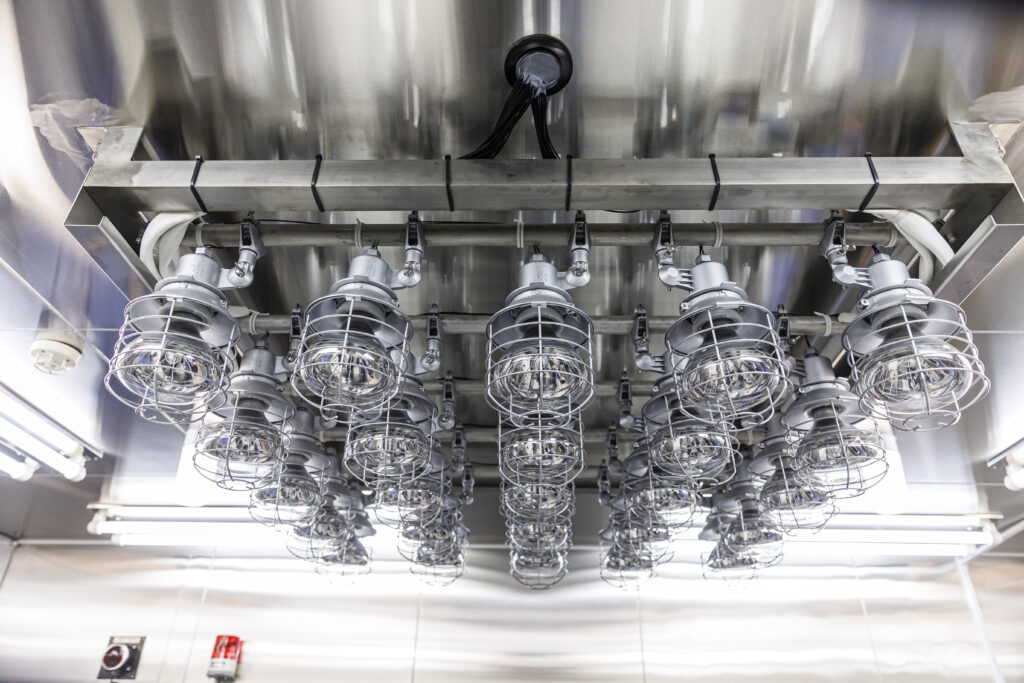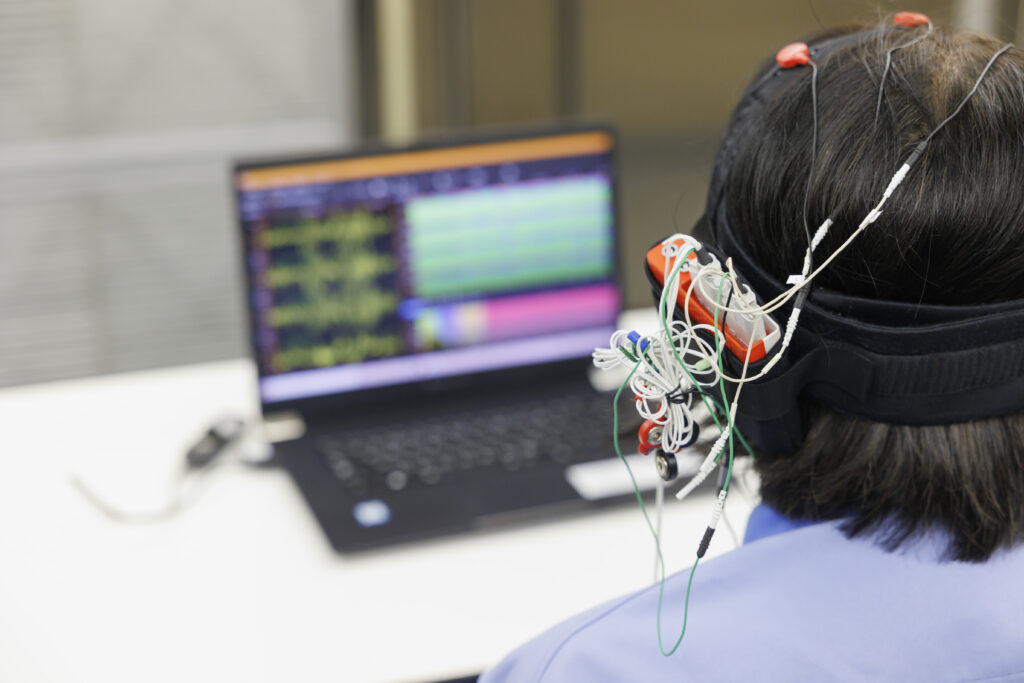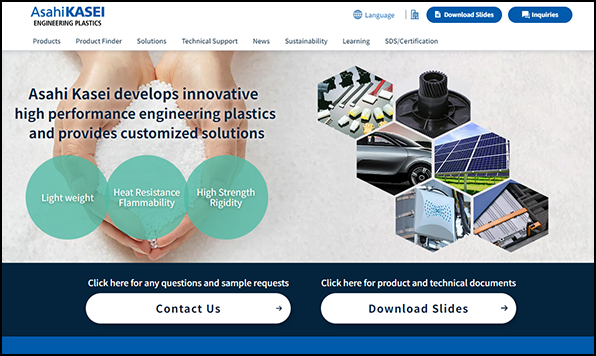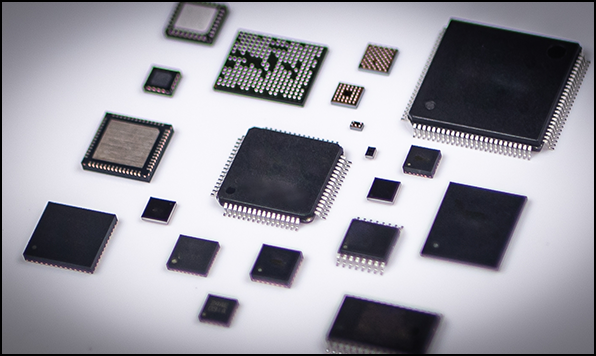
The second half of our special interview contents is continued from the last article introducing Asahi Kasei’s three-dimensional (3-D) honeycomb fabric CubitTM and its new applications for increased in-vehicle comfort and design creativity. Part 2 consists of a related report from the company’s R&D Laboratory for Applied Product, providing a behind-the-scenes glimpse at frontier research efforts into emotional sensitivity. Seeking to develop attention-grabbing new materials, the Lab is engaged in unique scientific studies on fabrics, with a particular focus on how they act on human health and comfort sensitivity. In recent years, major projects have gotten underway to develop novel applications for automotive interior, leveraging proprietary technologies established for inventing materials for use in sensitivity-focused inner clothing and underwear that come into direct contact with skin. Director of the Lab Junko Deguchi and automotive interior development project manager Takashi Komatsu talk about the Lab’s distinctive scientific approaches and methods, focusing on its thermal physiology research, the key to comfort solutions, as well as the organization’s visions.
(Link to the first article)
Click here to contact us about Asahi Kasei’s products and usage examples.

▲Junko Deguchi, Genaral Manager, R&D Laboratory for Applied Product, Fibers & Textiles R&D Planning and Business Development Performance Products SBU (right) and Takashi Komatsu, Manager, Fibers & Textiles R&D Dept., Fibers & Textiles R&D Planning and Business Development Performance Products SBU (left)
Bringing the knowledge of thermal research to car seats
Deguchi: The Lab is Asahi Kasei’s research and development center for new fabric materials. We have established a guiding principle called A3 TM (A-cubicTM) for developing materials with utmost consideration for comfort and health. A3 TM stands for the three key words: “agreeable” (refreshing and heat-retaining); “active” (functional during exercise); and “adaptive” (adaptable and gentle on the skin). We are currently thinking of adding a fourth key word that represents the “emotional” aspect in order to pursue comfort value in a more comprehensive fashion.
Our most basic product development concept is aimed at use in clothing. One of the most essential purposes of clothing is to help the user stay physically comfortable even when exposed to undesirable ambient conditions, such as very cold or hot weather. We think this is an essential and perpetual issue associated with human living. Ambient temperature and humidity are basic factors that affect physiological comfort, and for the person to feel comfortable these factors need to be controlled in order to achieve appropriate thermal equilibrium at normal body temperature. We place great importance on understanding physiological mechanisms related to comfort sensations. What kind of ambient conditions can cause what kind of physiological responses? How can we effectively determine the sweating threshold body temperature, for example? We adopt this kind of knowledge to achieve optimal clothing material design planning.

▲Junko Deguchi, director of the R&D Laboratory for Applied Product, traces her specialist career and lifelong research back to the Lab’s predecessor organization. She continues to engage in development projects for new comfort-oriented products.
Komatsu: Our BembergTM which marked the 90th year since its launch, is an excellent product suitable for the thermal physiological research. The fabric using BembergTM is appreciated for providing cooling effects amid the heat of summer. This is principally thanks to its primary ingredient, cotton linter (short downy fibers that enfold cotton seeds). Cotton linter is a pre-consumer material obtained from the manufacturing process of cottonseed oil and is higher in moisture absorbency than cotton. However, absorbed moisture tends to feel uncomfortable after a while, and thus needs to be released promptly to prevent such issue. A solution to this can be provided by artificial fibers, such as polyester. This material is suitable to processing as a W-shaped cross-section yarn, which can be woven into a gappy fabric, meaning superior fast-drying performance. With the addition of polyester, BembergTM can produce sweat-absorbing, quick-drying fabrics that are distinctively smooth and thin.

▲Cotton linter (short downy fibers that enfold cotton seeds), a raw material of BembergTM
Deguchi: Our signature strengths lie in developing fabrics that will come into contact with or be very close to skin. This is a cornerstone capability that supports our broad lineup of inner clothing and sportswear materials. The Lab has recently started projects to utilize these capabilities to develop new automotive interior materials. One specific target is car seat covers, which occasionally become very hot and sweaty and therefore uncomfortable. We are seeking to solve this issue by applying our thermal physiology-based technologies established to invent comfortable materials. We anticipate that such solutions will be appreciated for the purpose of heat control and prevention of heatstroke, given that summer heat appears to be intensifying every year.

Komatsu: In the company’s automotive interior development project team, we are studying thermal physiology, focusing on air permeability or breathability. For the use of car seat covers, this function is important to appropriately release moisture produced by sweat that has been triggered by above-threshold body temperature. For this purpose, we have chosen CubitTM 3-D honeycomb fabric (introduced in Part 1), a type of spacer fabric, which has good cushioning and breathability properties. The team strives to innovate the product’s applications for automotive interior materials while making technological improvements.

▲Seat cover using CubitTM 3D honeycomb fabric (introduced in Part 1).
Thermal physiology control room equipped to quantify emotional value through measuring heart beats and other indicators
Deguchi: Now, I’ll give you a glimpse of the measurement room, a special setting for our backstage activities. This room is equipped to control ambient temperature and humidity to meet set conditions. The temperature setting range is from minus 20 degrees to 50 degrees Celsius. The indicator reads 26 degrees Celsius and 60% humidity at present. The purpose of this facility is to measure effects that changes in ambient temperature and humidity have on the human body’s reaction and the physical properties of fabrics.

Think about the clothing you are wearing. To ensure your physiological comfort, it is essential that temperature and humidity levels of your skin or the zones between your skin and your clothing are appropriate. In a high temperature condition, you will soon start to get sweaty under your clothing and feel uncomfortable. This room has functions to measure how your heart rate and brainwave patterns change when you experience such uncomfortable sensations. Also, physical measurements would be examined in combination with the observation of your conscious sensations. Our examinations indicate a tendency for changes in heart rate and brainwave patterns to appear before the person becomes conscious of the related sensation.

▲The measurement room’s ceiling illumination is designed to mimic natural light. The room has two sections to allow for different temperature and humidity settings. For example, to create an in-vehicle space and a separate midsummer outdoor setting to observe physiological and sensory responses in the subject when the person moves between the two sections.
Komatsu: The heart rate changes in response to external stimuli more quickly than other indicators, though the changes are relatively gradual. We read heart rate measurements carefully to determine comfort levels. In general, the heart rate rises when you are experiencing tension or stress, and when doing exercise and other physical activities. In contrast, it declines when you relax. That said, heart rate changes are not necessarily associated only with physiological comfort levels. So we need to be careful to avoid making hasty assumptions about the correlation between the two factors. It’s not as simple as it looks.

▲The Lab has invented original methods to quantify physiological comfort levels, based on data accumulated over long years of monitoring the amount and distribution of relevant changes in heart rate readings. The methods are used to grasp sensory responses to a variety of external stimuli, in order to use resultant findings for new materials development.
Look at the heart rate monitoring data associated with seat cover fabrics, comparing a present product with the product under development to achieve a surface material providing a cool sensation. When the surface remains as cool and dry as before, causing no physical burden, the heart rate reading will not rise. However, the physiological state may not be consciously sensed by the person, or the change may be extremely subtle. Thus, brainwave sensors are employed to provide supplementary data.
Studying physical and emotional responses in more depth and detail to develop innovative products
Deguchi: This section is engaged in research to improve hand feel—the way fabrics feel against the skin. Essential tasks are performed to check skin for any area suffering stress arising from contact with clothing fabrics. Specifically, the skin’s elasticity, acidity, and stratum corneum hydration are measured, and obtained data are comprehensively analyzed to clarify skin conditions. Hand feel is a subjective property that varies according to individual skin type, condition, and sensibility as well as personal preference, which poses a challenge to objective assessment. In a bid to work out solutions, the research team is striving to effectively combine observation of sensory responses and scientific measurements. These efforts also involve study on the physical properties of target fabrics using various systems. Major processes include microscopic observation of the fabric surface, and mechanical measurement of the fabric’s stretch, breathability, and other properties. In addition, heart rate and brainwave measurements are taken to understand the way the person feels about wearing the target fabric as well as to determine whether or not a feeling of relaxation is taking place even at subconscious levels.

▲Somatic sensation (bodily sensation) is susceptible to seasonal changes in the weather, among other factors. Somatic response to external factors is not simple. You may occasionally feel warm in winter, even though it is the coldest season, which may be attributable to your physical condition on the day, activities you did on the previous day, or other reasons. There is naturally also a lot of individual variation. Somatic sensation is thus too complicated to be reproduced. The above photo shows a skin hydration meter.
We have been studying physiological comfort for many years, including when we were working on the physical functionality of products in the past. At that time, when examining how fabrics could support the performance of clothing, we looked only at the material and product, while overlooking factors related to the wearer. Recently, we have begun to recognize the importance of considering these factors, and started to take scientific approaches to understand physiological and emotional responses. We are only halfway down the road, and are challenged by a lot of things we need to learn in more depth and detail.
Komatsu: Recently, many industries have begun to pay more attention to emotional and sensual value, including comfort, and relevant development processes are progressing rapidly. We adopt various methods based on simulation, CAE, DX, and MI, in addition to our original human sensibility measurement methods, in order to upgrade our product development processes based on research on emotional sensitivity. One major plan on the table is to feed heart rate and brainwave measurement data for sensations at unconscious and subconscious levels into CAE programs to create a digital material development platform, with a view to creating boldly innovative inventions.
Emotion-focused personalized automobiles
Komatsu: From ancient times, people have often used clothing and fashion items to reflect their personality. I think this is because people tend to develop a sense of ownership from what they wear. It seems that a similar attitude is appearing among car owners. More people are seeking emotional value, such as comfort and preference fulfillment, from their own car.
Given this context, it is expected that automakers may have to change their production systems to shift their focus from catering to a majority of consumers to targeting individuals. I’d like to suggest that automakers should look for a smaller number of people who have decided not to buy a certain model, rather than a much larger number of customers who have chosen it, and do surveys to find out what each individual in the minority group prefers in terms of emotional and sensual value.

▲Takashi Komatsu has built his career chiefly in three development departments, first in raw materials, then products and uses. The transfer between departments was quite a challenge for him, like “changing your major from mathematics to art,” as he put it. But he is now enjoying “engaging in challenging work to study emotional sensitivity and exploring the world that is invisible to the naked eye, including through microscopic observation.”
In my view, in such a situation, the manufacturing sector will place greater weight than before on requirements for visualization related to emotional sensitivity, such as for comfort and other sensations. Specifically, with respect to studies on thermal physiology, the primary purpose of research was previously to determine the range of standard comfort levels that work for a majority of consumers to help develop standard products. Going forward, we should also approach non-standard individuals or the minority. To this end, we need to strengthen our emotional sensitivity assessment capabilities to ensure effective measurement and visualization, in order to support production to offer emotional value. I suggest that we consider exploring the possibility of inventing technologies to change the color or other attributes of the car seat cover as desired at the touch of a button. This is a dream at present, but it may come true in the future. In the coming years, something more edgy or outlandish will take center stage and be more eagerly sought after, replacing standard items representing the needs of the majority.
The automotive sector is undergoing its greatest transformation in a century, and vehicle systems will also change. I hope we will be able to make such revolutionary changes to our products. Personally, I like driving a car with comfort, and being able to feel the wind. I’ll never forget the thrill I felt the first time I drove a car. I felt like I had acquired an extension to my body.
Click here to contact us about Asahi Kasei’s products and usage examples.
This article was published on March 22, 2022.
 Mobility-related information website
Mobility-related information website








